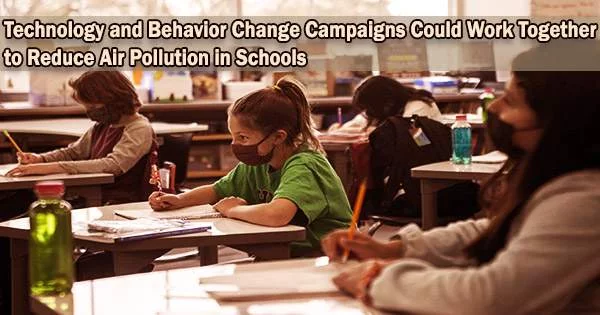According to a recent study from the University of Surrey, developing campaigns that include the varied population surrounding many of the UK’s schools could aid in maintaining low levels of air pollution, particularly as much of the nation confronts the cost-of-living issue.
The Global Centre for Clean Air Research (GCARE) in Surrey discovered that initiatives like “school street” that try to change the behavior of parents, teachers, and the neighborhood could cut outdoor nitrogen dioxide exposure by up to 23% when compared to business as usual.
The authors of the study contend that behavioral change initiatives should be more inclusive and take into account the varied student body and surrounding community.
However, it is important that schools take into account the rich diversity of the school community and their general local community. Health could be significantly improved and even lives saved through more air pollution awareness campaigns that target parents, schools, and children, as well as business owners and the general public living around the school itself. Ideally, this would be in addition to air-cleaning technologies and those responsible for school and healthcare funding should act on this. But even in isolation a real difference can be made through community-based behavioral changes.
Professor Prashant Kumar
Professor Prashant Kumar, the corresponding author of the study and founding- Director of the GCARE at the University of Surrey, said:
“Schools are going through lean times where every penny matters, and while some of the effective technologies in this study may appear unrealistic, the success of behavioral campaigns is clear from the evidence. Our study indicates that when local communities come together to raise awareness of air pollution, school exposure levels drop significantly.”
“However, it is important that schools take into account the rich diversity of the school community and their general local community. Health could be significantly improved and even lives saved through more air pollution awareness campaigns that target parents, schools, and children, as well as business owners and the general public living around the school itself. Ideally, this would be in addition to air-cleaning technologies and those responsible for school and healthcare funding should act on this. But even in isolation a real difference can be made through community-based behavioral changes.”
GCARE researchers conducted a comprehensive literature review of how several technologies, such as HVAC (heating, ventilation, and air conditioning) systems, air purifiers, and also behavioral changes can impact the concentration of pollution particles in classrooms.
The study also showed that equipping ventilation and air conditioning units with high-efficiency filters could lower the concentration of fine particulate matter in classrooms by up to 30% when compared to ambient concentration.
According to their study, air purifiers can reduce the concentration of hazardous particles by up to 57% when compared to rooms without air purifiers, and some of them can also lower allergies, viruses, and germs. Interestingly, it has been demonstrated that having indoor plants in the classroom can lower volatile organic compounds by up to 73%.
Professor Kumar commented:
“If a school is fortunate enough to install many of these interventions, the big takeaway is that they should not be used in isolation. For example, air purifiers will not magically produce fresh air within a space. Therefore, a holistic approach to how these technologies and campaigns can work in a school context will be key to making sure that clean air is available to as many children as possible in the classroom.”
This study has been published in the journal Science of Total Environment. This work builds upon GCARE’s groundbreaking studies on school guidance, which have been published in more than 20 countries, as well as several studies that were jointly planned with schools.





